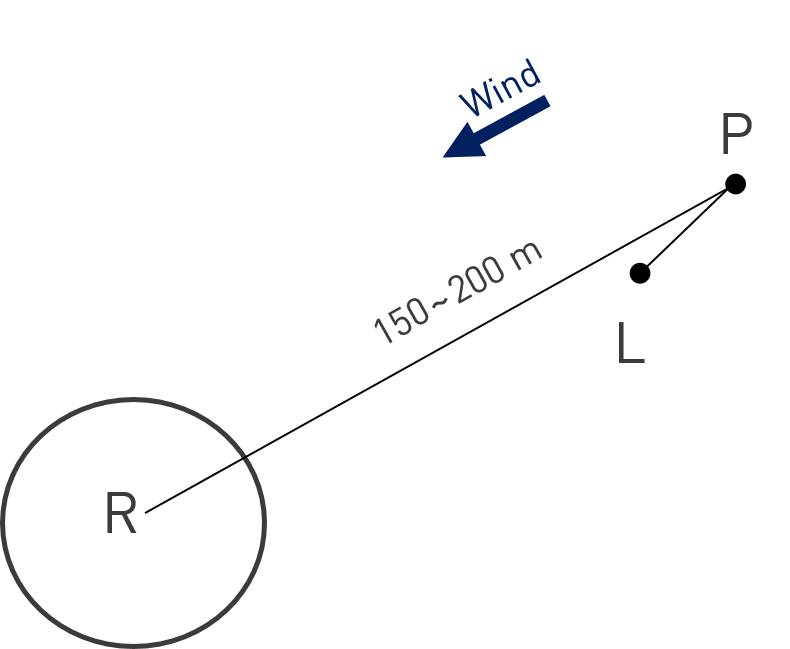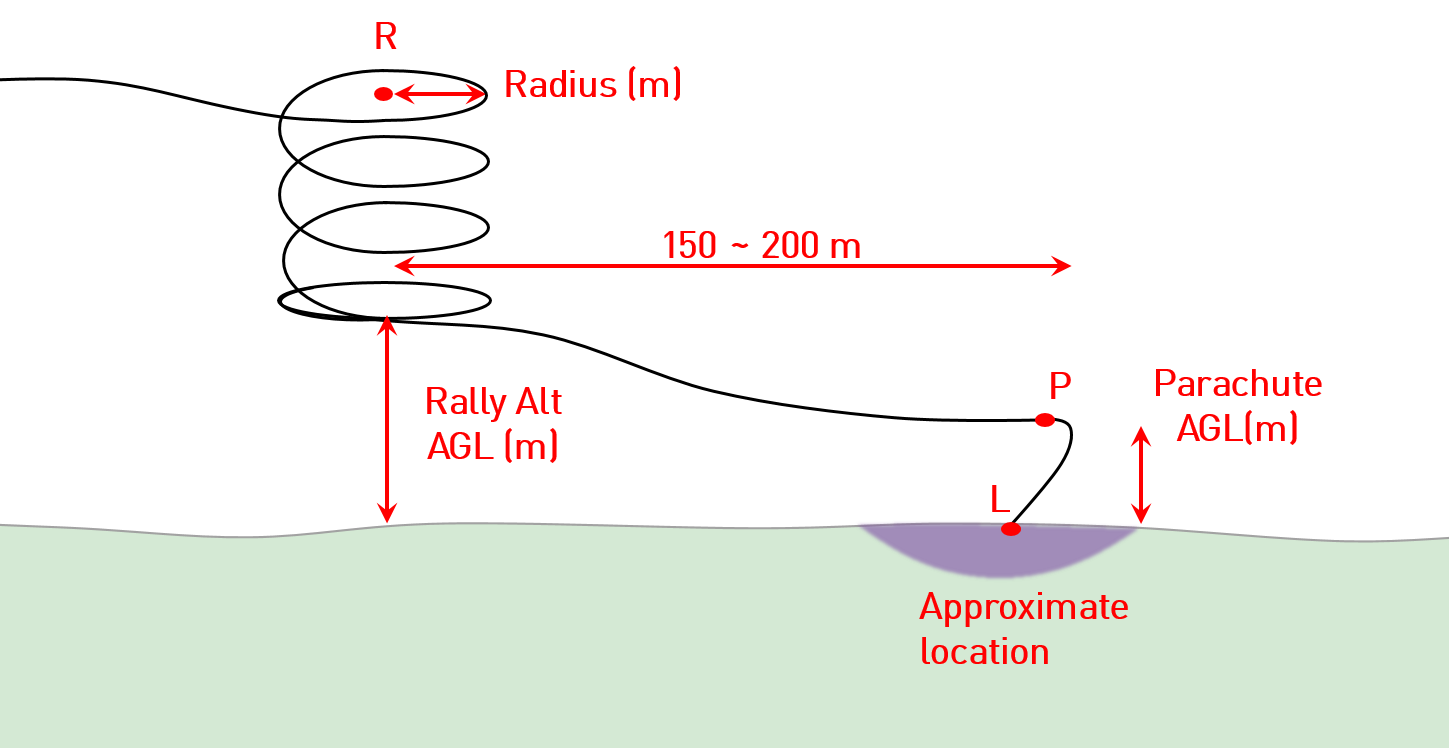
ATLAS UAS uses a parachute for landing. Area the size of 30 x 30 meters should be sufficient for safe landing.
Landing is done in two stages. In first stage the UAV is lowered in Rally point. At this point the UAV decreases altitude from operational altitude to around 55 to 45 m AGL (preset by the operator). When this altitude is reached the UAV heads straight towards P point and lowers down to approximately 35 m AGL. At this point the parachute is deployed and the UAV turns around on its back to land and thus protecting the payload.
Follow the rules when selecting the landing position:
•Place Rally point in open area to allow safe descend.
•Make sure no obstacles are between Rally and Parachute Pop point.
•Place L point in clear area to allow the UAV safe landing.
•Monitor UAV until landing.
IMPORTANT: L point is only approximate point calculated form the current wind speed and direction. The actual landing may vary from the actual point.
IMPORTANT: Once the UAV lands try to catch the parachute quickly and prevent the UAV from being dragged on the ground to minimize the possibility of UAV getting damaged.
 Landing Top View
|
 Landing Side View |
